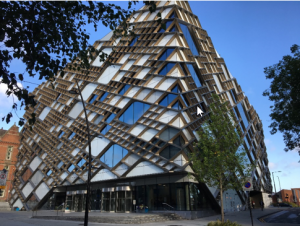September this year saw the fourth annual EPSRC MultiSim Modelathon held at the impressive Diamond Engineering Facility at the University of Sheffield. The four-day modelathon event brings together the very best of theory and practice in the area of multi-scale modeling.

Dassault Systèmes has supported the MultiSim Modelathon since its inception in 2015. This year’s theme was very much aligned with one of our long-term goals – to leverage computational research in the multi-scale modeling of osteoarthritic joints to improve patient outcomes.

The Modelathon brings together the brightest PhD and PostDoc researchers from around the world, future leaders in their fields, to compete in teams against one another to solve a complex multi-scale modeling problem. This is as an excellent opportunity to provide participants with a leading portfolio of software to help them reach their goal and, ultimately, that they will use in the future.
This year there were 15 multi-national attendees from Universities throughout EMEAR. They were split into teams of 5 and asked to solve a number of challenges based around a human femur model to look at the effects of gait, loading and wear on a replacement hip for an osteoarthritic patient. The starting point for these challenges were CT and MRI images of the femur. The teams worked together to gain a deeper insight into building musculoskeletal models, finite element and kinematic models from personalized clinical data.
This year I was happy to be joined by Wen Xiao from the UK SIMULIA CoE for 2 of the days. Our role during the event was to support participants with our knowledge of the software and our experience in the Life Sciences industry. Wen and I were inspired and excited to see how the teams worked together to tackle the challenges.

The teams could choose which software they used for each of the challenges and it is worthy to note that 2 of the 3 teams chose Abaqus for the FEA solver!

The most exciting thing about this year’s event was that the winning team, Team 2, started off using ANSYS as their FEA solver, but quickly changed to Abaqus when they realized that the contact capabilities of Abaqus are far superior to those in ANSYS. Team 2’s approach to the contact and wear around the femural head was the deciding factor for the judges and ultimately won them the competition. Each member of the team won £100 of Amazon vouchers!
Well done Team 2!

